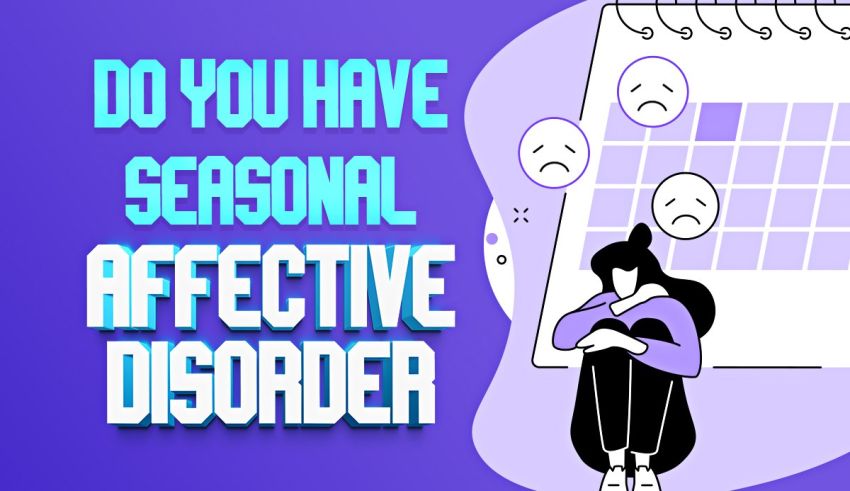Every winter, do you question yourself, “Do I have a seasonal affective disorder?” To determine if you have the winter blues, take this DSM-5 assessment.
Seasonal Affective Disorder: What Is It?
Depressive disorder with a seasonal pattern, formerly known as seasonal affective disorder, is basically significant depression that gets worse at the same time every year, usually in the fall and winter. In other words, it lists MDEs that happen throughout particular seasons.
probable cause
The hormones serotonin, which controls mood, and melatonin, which controls sleep, are thought to fluctuate in the seasonal affective disorder.
The absence of sunlight during the winter affects the generation of serotonin and melatonin, which impacts your energy level, sleep or chronotype, and mood—especially in higher altitudes.
Childhood trauma, genetics, and socioeconomic factors are further potential explanations.
Symptoms
Oversleeping, irritability, low energy, weight gain, altered appetite, and hypersensitivity during a specific time of year are the most typical SAD symptoms.
A SAD Test Can Tell You If You Have It.
Take this 20-question psychological test to determine if you may have seasonal affective disorder by evaluating your symptoms. The current test uses your self-report to evaluate whether you have SAD and is based on the DSM-5 standards.
Seasonal Affective Disorders in Different Forms You Might Have
Any Major Depressive Episode (MED) that occurs during both warm (spring and summer) and cold (winter) seasons is referred to have SAD (autumn and winter). However, research indicates that SAD sufferers in the summer have different symptoms than those in the winter.
SAD in winter
Wintertime symptoms of a seasonal affective disorder, according to Dr. Todd Grande, include low energy, overeating, weight gain, hypersomnia, and a need for carbohydrates.
Vacation SAD
However, lack of appetite, weight loss, anxiety, and insomnia set the same illness apart in the summer.
Possible Bipolar Disorder
You understandably wonder things such, “Do I have seasonal affective disorder?” as a result of your temporal mood swings. The trouble is, though, that’s not the only possibility; you might also be battling bipolar disorder or another seasonal disorder.
As noted by doctor Grande, the term “seasonal” designates personality disorders including significant depression and bipolar.
The Seasonal Affective Disorder Test Looks for These 3 Sigs
SAD is a difficult condition to diagnose because it is not a specific ailment. But for accurate findings, the test looks for the following indicators.
#1. The temporal association between MDEs and seasons.
The seasonal affective disorder should have clear associations with particular seasons, as the name would imply. The exam therefore aims to determine whether your melancholy and moodiness get worse throughout any of the four seasons.
Seasonal remissions, second.
During other times of the year, the majority of people who have the winter blues completely recover. For instance, a person who has depression in the fall may feel completely energized in the summer. That serves as another another SAD test sign.
3. The ratio of seasonal to non-seasonal MDE.
You ought to experience significant depressive episodes more frequently than non-temporal ones. Therefore, it’s unlikely that you have a seasonal affective disorder if you’re irritable and depressed throughout the year.
SAD? Take the test to find out why.
Still unsure whether you suffer from seasonal affective disorder? If so, complete the following psychology test to determine how you feel. The exam can determine whether the disorder is SAD, BPD, MDE, or another one.
Disclaimer
None of the people or businesses mentioned in the seasonal affective disorder test are connected to QuizExpo.
Please refrain from replacing the quiz with a clinical diagnosis and refrain from using the findings to self-diagnose or self-prescribe.
For more personality quizzes check this: What Sorority Should I Join.





